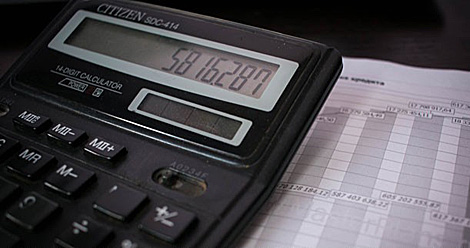Business news
Belarus' central bank expects inflation at about 6% in 2020, near 5% in 2021

An archive photo
MINSK, 11 November (BelTA) – Belarus' National Bank expects the inflation at about 6% in 2020, and near 5% in 2021, Chairman of the Board of the National Bank Pavel Kallaur said at a briefing for the press on the board meeting on monetary policy, BelTA has learned.
On 11 November, the Board of the National Bank made a decision to keep the current refinancing rate at 7.75% per annum and interest rates on liquidity operations.
"This year, the increase in consumer prices is expected to be about 6%. In the future, we forecast a gradual slowdown in the inflation. By the end of 2021, the inflation will approach the target level of 5%. This will be facilitated by the predominance of prolonged disinflationary factors," Pavel Kallaur said.
With regard to such external factors, the bank believes that the world economic recovery will take time. The ongoing deterioration of the epidemiological situation in the world will slow down the recovery process.
Weak demand will limit inflation in foreign countries. Under these conditions, the European Central Bank, the US Federal Reserve and the Bank of Russia are expected to conduct a soft monetary policy. Inflation abroad is projected to stay below the target parameters until the end of 2021.
"External factors coupled together will have a deterrent effect on the inflation in Belarus through the prices for imported goods, and also on the economic activity of the country as a whole," Pavel Kallaur believes.
The annual inflation in Belarus has accelerated to reach 6.2% by the end October. “Prices mainly increased due to the weakening of the Belarusian ruble against foreign currencies in August. First of all, this affected the prices for imported non-food products,” Pavel Kallaur explained. The Belarusian ruble weakened because of the increased demand for foreign currency on the domestic currency market. This was triggered by negative expectations about further economic development prospects. The withdrawal of bank deposits in the national and foreign currencies also contributed to the situation.
According to the head of the National Bank, the situation in the financial market is currently stabilizing. The withdrawal of bank deposits slowed down in September and October. Net foreign currency supply is available. This contributed to a relatively stable exchange rate.
“The analysis of the current situation shows that the factors underlying the inflation growth are temporary. Their influence will weaken,” said Pavel Kallaur.
With the recovery of external demand projected in H2 2021, the Belarusian economy is expected to return to the track of sustainable economic growth.
The recovery of business activity in the world will be a factor that will improve the balance of payments. The exchange rate is not expected to influence the inflation rate.







 print version
print version make home page
make home page add to bookmarks
add to bookmarks

